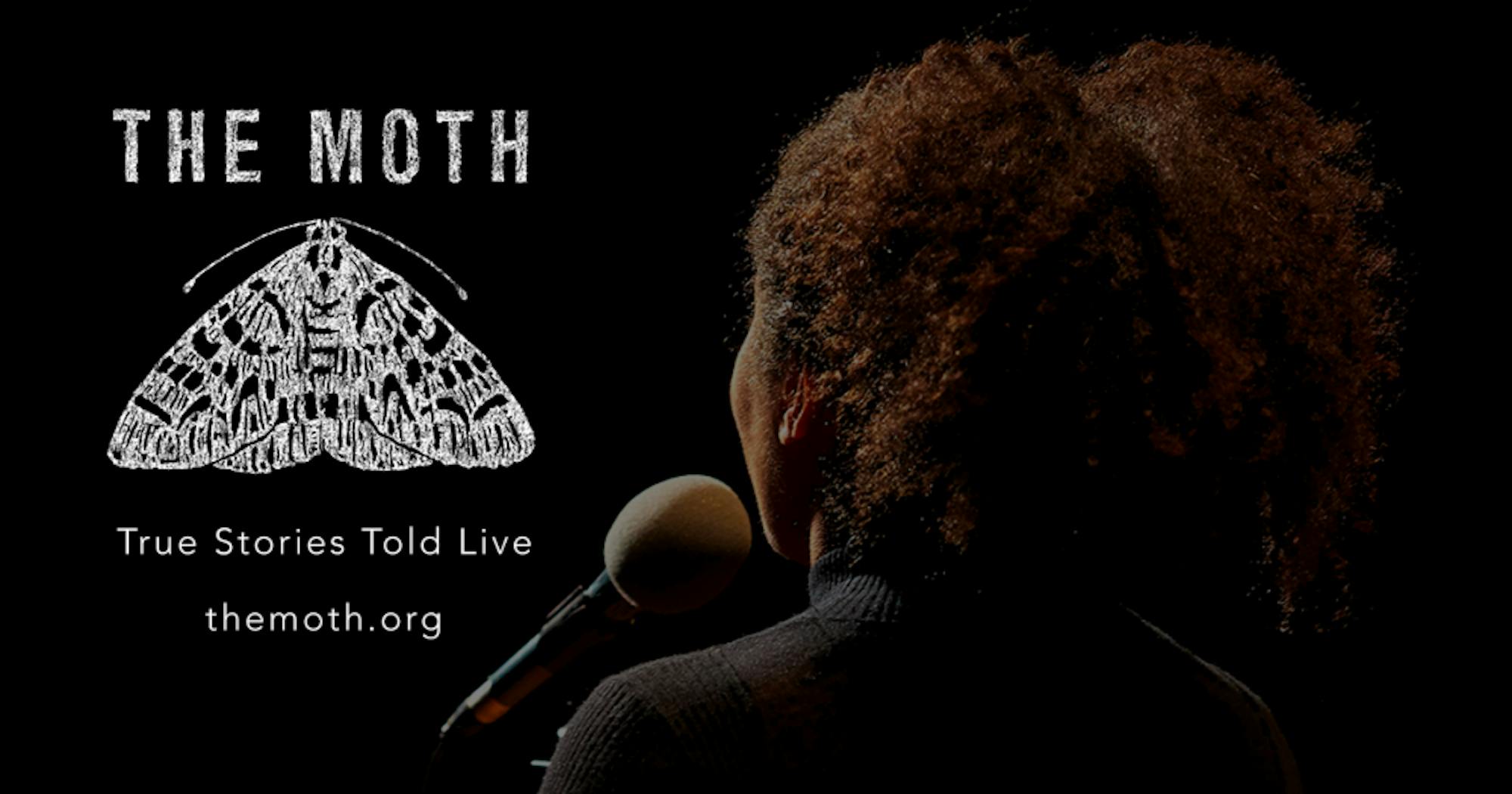“And the only way I can think of to do, to soothe this room full of crying kids, is to sing. I sing the only song that I know all the verses to: ‘Amazing Grace.’ I walk around singing, and I placed my hand on each child. And I cry. I cry because this world is unfair.”
Thus said Kristin Huang, a primary care physician at Tufts Medical Center who appeared on the stage of the historic Wilbur Theatre in Boston on Oct. 14 as part of the virtual “Mainstage” program of the storytelling organization, The Moth. In light of COVID-19, The Moth’s virtual programs continue to foster emotional bonds between people through its broadcasting of the most personal, moving and vulnerable stories.
According to Jodi Powell, a producer at The Moth, the idea for an organization focused on storytelling started when its founder, George Dawes Green, gathered his friends in his hometown of Savannah, Ga. together to tell personal stories to each other.
“And as the sun was setting, and night came upon them, they decided to move that circle inside. And they moved inside the living room: cozy setting, close, intimate, safe feeling, but they noticed that there was a hole in the mesh that is put up for insects, and the moths would come in, go through the hole and go straight to the light,” Powell said. “For them, it was symbolic of people going where the story is going, where the light is: being drawn to that vulnerability and brightness and inspiration and closeness that story brings.”
After moving to New York City and perceiving the sense of isolation hidden behind the Empire City’s grandness, Green decided to replicate his home experience, setting storytelling venues in basement bars of New York. As explained by Powell, this was how The Moth began.
Storytellers can utilizeThe Moth’s platform by pitching a two-minute story to its pitch line or participating in a StorySLAM, which took place in many major cities before the pandemic, according to Powell. She explained that during SLAMs, many audience members spontaneously signed up to appear on the stage next.
If a storyteller wins a StorySLAM and goes on to a GrandSLAM, or if they participate in a curated Mainstage show, a Moth director like Powell will help elevate the story. There is no hidden formula behind the sheer eloquence of a Moth story; rather, Powell believes a coaching session is a “dance” between the director and the storyteller. The director asks casual, everyday questions about the story and encourages the storyteller to build upon interesting details, so as to give the story a more fleshed-out narrative and unique angle.
To Powell, what ultimately makes a Moth story is the storyteller’s willingness to be vulnerable, to lay bare their darkest moments and to reveal their change and growth.
“We talk a lot about being vulnerable. In storytelling, oftentimes that's what the audience relates to. When you can show a part of yourself — we call it telling on yourself — well, you did this thing that wasn't that great,” Powell said. “But it's something that you revisited five years, 10 years, 15 years later, and you're seeing it wasn't that great, but it taught me this; Moth stories very much carry this element of change.”
Yet an important element of a Moth event, the deeply personal exchange between the storyteller and the audience, is disrupted by COVID-19, according to Powell.
“There’s a moment when the live audience leans into the show; when I see them, that’s what I love,” Powell said. “It’s an exchange: The storyteller gives, and the audience receives. And I have to say, in the virtual space, that is difficult.”
Yet on the Wilbur stage on Oct. 14, which was streamed online, the sparks of vulnerability could still be found.
One of the most memorable stories of the night featured Julie Pryor, the director of communications for the McGovern Institute for Brain Research at MIT, who recalled a night where her trucker father was too drunk to drive and asked her 14-year-old self to drive his pickup truck. Meanwhile, Willie Nelson’s greatest hits played. The haunting teenage memory juxtaposes the adult Pryor, who was producing a documentary in Alaska when she volunteered to be the only female truck driver to drive through the North Slope of Alaska. As she thought she was going to be buried by the snow, she heard Willie Nelson on the radio and recalled images of her 14-year-old self listening to Willie Nelson with her father at his final moments. She survived.
So, too, does Kristin Huang’s story have a positive twist. She told the story of being the only Chinese kid at her school in Iowa when she was six; to make matters worse, she was made fun of for sounding like a boy. As she grew up and tried to blend in, she became ashamed of her voice and learned to hide it. Later on, she worked at an orphanage in China where she discovered the only way to pacify a room of crying children is to sing. The world is “unfair” to her in an unexpected way: Her fear, it turns out, is of little concern to these children.
“When I sing in my natural register — yeah, my voice might be deep. It might be different, but it is rich and resonant and powerful. And that makes me feel invincible. That something I've been ashamed of my whole life can bring peace and comfort.” Huang said. “I once was lost, but now I’m found.”






